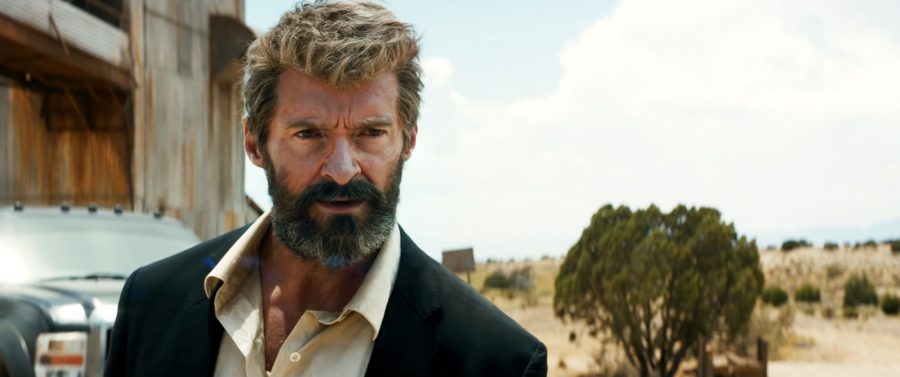Art With a Heart of Adamantium
April 6, 2017

The success and acclaim of Marvel’s latest feature film “Logan” is undeniable. In its raw, uninhibited style, “Logan” delivers iconic characters like fans have never seen before. They call it “The Dark Knight” of the Marvel Cinematic Universe. But why was either film so highly acclaimed?
Social issues saturate today’s superhero films and characterize the heroes themselves — note the recent controversies surrounding superheroes Iron Fist and America Chavez. People can easily forget that art doesn’t necessitate a political or social statement. Art can exist purely to entertain. This abstention from argument, in effect, delivers its own statement — one that many growing artists could benefit from. The artwork is made by the artist and the artist comes from the society, but the artwork is not made by society. People will always gravitate toward art that is genuine, individualistic and representative of the essence of the artist. Any adaptation will be successful if and only if it captures this personal quality.
Today, the most popular films are those that allow the audience to escape from the monotony and tedium of daily life. People of every age, culture and gender will suspend their beliefs of normality in exchange for that possibly lost sense of wonder. Without entirely ignoring social structures, superhero fictions at their core are a source of entertainment. They create liminal worlds for everyday dreamers where the impossible is possible, and that has driven their success for decades. The reality is that Marvel and DC’s blockbusters are becoming the contemporary canon of socially relevant feature films. So it is becoming increasingly imperative for these adaptations to not stray too far from what made their source material so loved, and this is where “Logan” is second-to-none.
Rather than being tasked with saving the world, in “Logan” viewers witness a superhero’s — and ultimately a man’s — internal struggle as he seeks the will to save others and himself. More people can understand and empathize with these emotions — they make these intense worlds and characters much more approachable. Though the plot isn’t groundbreaking, the film’s character development evokes a kind of nostalgia. Beyond its super elements, there are priceless moments of familial drama, love, loyalty and loss. While some components — primarily the antagonist — felt underdeveloped, they still served a purpose to the entire narrative. In terms of drama, “Logan” has not only succeeded, but it has also set a new standard for the industry.
After 17 years of watching Wolverine’s development, we expect more than a good time — we expect truth and quality, and “Logan” aptly delivers. With an ending and a beginning deserving of our admiration, the film emphasizes human obstacles like pubescent attitudes, senility, language barriers, monetary struggles and winding plots. Seeing the indestructible Wolverine face everyday problems as well as his own mortality, we find a vulnerability that has more substance than an endless list of scripted, witty quips. Wolverine is a shark. By design he is meant to survive, so it’s a special engagement to explore this character’s weaknesses. And what will keep “Logan” at the forefront of many minds is its unique success in capturing the human essence at the core of this tired hero.
Visually-stunning wild plot rides will not stand the test of time. With good filmmaking, how the story is told can be more important than the story itself. Fluid presentation and strong performances are important, but what audiences connect with most is the heart of the artwork. Believable emotion, intention and motivation solidify works like “Logan” and “The Dark Knight” as all-around strong works of art. As fun as Marvel’s recent blockbusters have been, the future of superhero films lies in capturing those intimate and personal moments that the comic books are known for. Even 2016’s absurd “Deadpool” shows the appeal of candidness. Geoff Johns, one of the most powerful comic writers in contemporary fiction, will do DC some good in this area. Even the ongoing works of Scott Snyder, Benjamin Percy, Dan Slott and Brian Michael Bendis provide ample ammunition to bring an audience in and pull on their heartstrings and mindstrings.
When you walk into a superhero film looking for a social issue to grapple with, you will leave the film contentious and offended. But honesty and vulnerability speak more to humanity, and they can speak just as loud as any pointed argument. These qualities cannot be forgotten, especially in today’s art. It’s why Frank Millar’s “The Dark Knight Returns” will forever be superior to Nolan’s “The Dark Knight Rises.” Heroes and artists alike don’t have to exist as godlike champions, and “Logan” proves this with utter intelligence. Lifelong fans and newfound followers will appreciate everything this movie has to offer, from its artful bloodshed to its fearless tears. Hugh Jackman’s Wolverine was the perfect protagonist to make this silent statement, and it will hopefully open a new chapter of filmmaking.
A version of this article appeared in the Thursday, April 6 print edition.
Email Tristen Calderon at [email protected].

